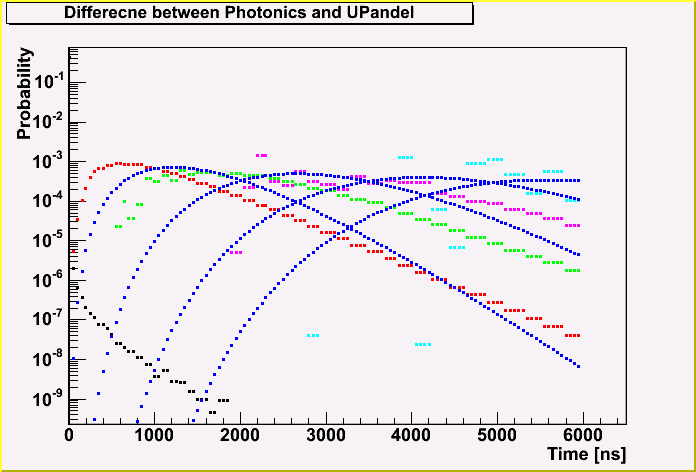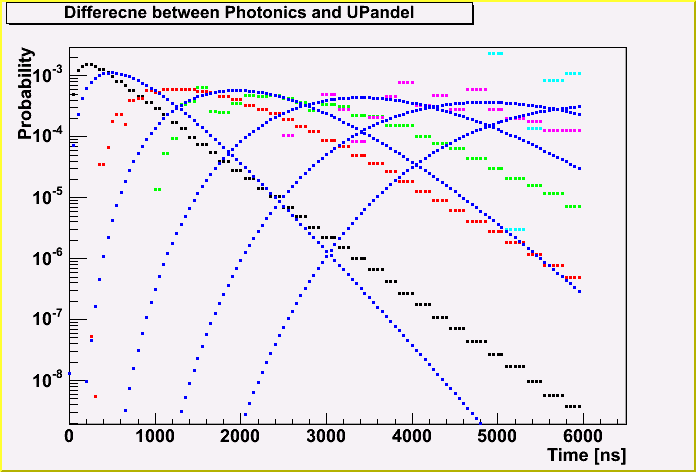
I have checked the consistency between the Photonics 1.50(Starlight) and the Photonics 1.4.
See also the Photonics 1.4 check page.
At first, I checked the difference between Photonics 1.50(Starlight) and UPandel function.
Electromagnetic showers of different energies are used.
The blue points represent UPandel function, the black green and red points represent Photonics tables. The Photonics tables are not symmetrical, but it depends on the OM position. The black, green and red represents +x, +z and -z direction, respectively. There is the difference for the z axis, but symmetrical for x and y directions. The UPandel function is symmetrical for any direction. The energy is 10^19 eV.
The result(above) is almost the same as before(below,Photonics 1.4) for +x and +z direction. The result(above) is almost the same as before (below,Photonics 1.4) for +x and +z direction. The red points (-z direcrion) has a discontinuity caused by statistics.
Note that the axis range is different.

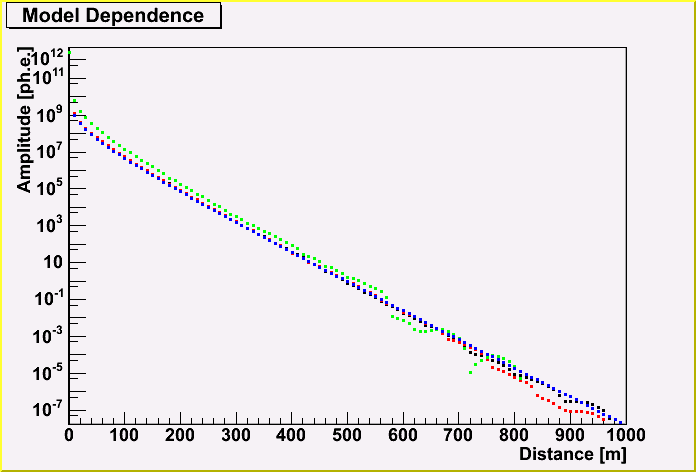
Here, The energy dependence of the amplitude for Photonics is shown. The black, red, green and blue points are for 10^15, 10^17, 10^19 and 10^21 eV, respectively. (The x direction)
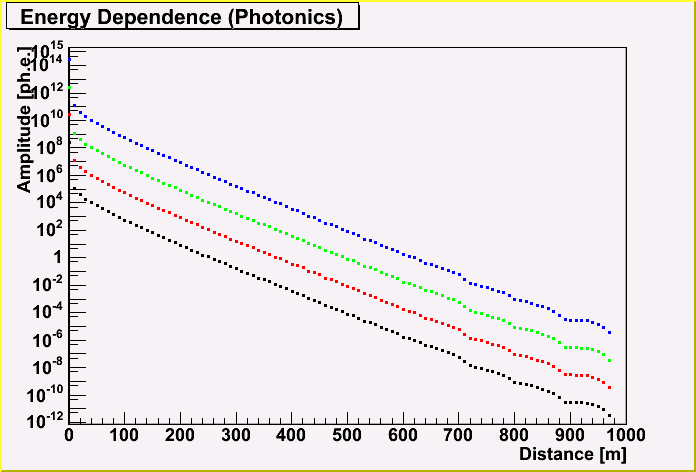
This is the same for UPandel function.
The next plot shows the difference between Photonics (x direction) and UPandel function, depending on the energy. Concerning to the comparison between the x direction of Photonics and UPandel function, they agree well with each others.
The graph below is the result with Photonics 1.4.
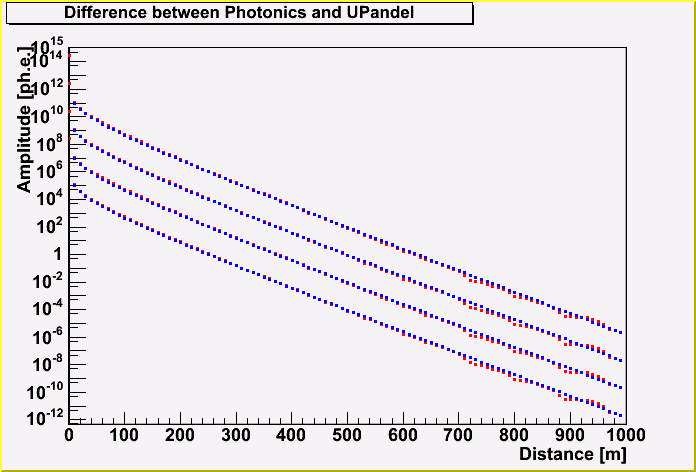
As same as above, let me show a plot which shows the difference between Photonics and UPandel function. The blue poitns are UPandel, and black, green and red points are Photonics (+x, +z and -z respectively).
This distributions don't depend on the energy, but do on the distance from the cascade vertex to a OM position. In this case, the distance is 200 m from the vertex point.
Here, we can see the difference between the Photonics and the UPandel function.
The graph below is the result with Photonics 1.4.
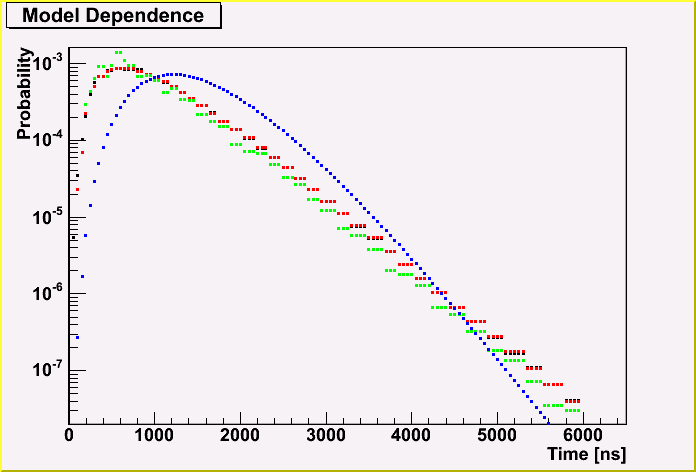
The next plot shows the distance dependence. This is for Photonics. The black, red, green, magenda and aqua points are for 100, 300, 500, 700 and 900 m respectively.
The fluctuation of points above for 700 m become smaller than that of Photonics 1.4(below).
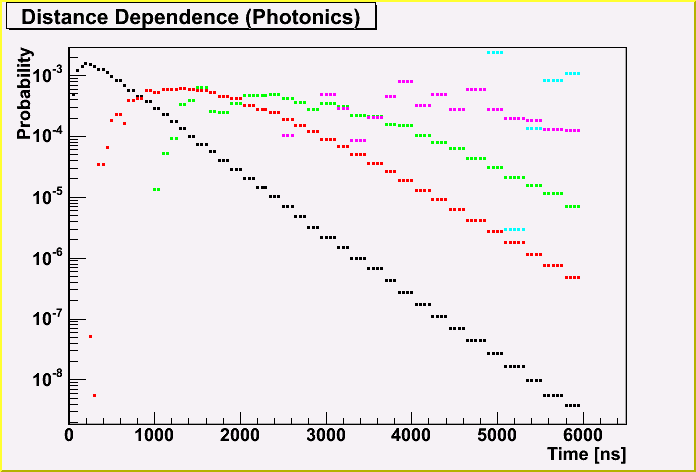
This is for the UPandel function.
The next 2 plots shows the difference between the Photonics and UPandel function, depending on the distance.
The blue points are of the UPandel function, and the color points are of Photonics. The distance is 0, 200, 400, 600 and 800 m for the first plot, and 100, 300, 500, 700 and 900 m for the second plot. (Note that the distance of 0 m for the UPandel is not correcly calculated and is not shown here.)
